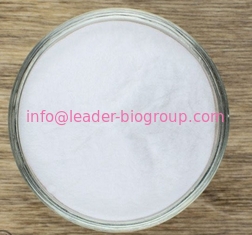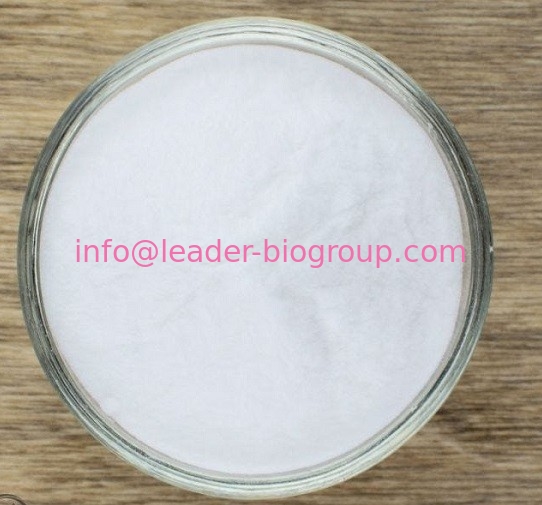Inquiry email: info@leader-biogroup.com
Hot Line +86-029-68895030
+86-029-68569961
+86-029-68569962
Fax +86-029-68895030
| Hexadecyl trimethyl ammonium bromide Basic information |
| Product Name: |
Hexadecyl trimethyl ammonium bromide |
| Synonyms: |
N-CETYL-N,N,N-TRIMETHYLAMMONIUM BROMIDE;N,N,N-TRIMETHYLTETRADECYLAMMONIUM BROMIDE;N-HEXADECYL-N,N,N-TRIMETHYLAMMONIUM BROMIDE;N-HEXADECYLTRIMETHYLAMMONIUM BROMIDE;PALMITYLTRIMETHYLAMMONIUM BROMIDE;TIMTEC-BB SBB008910;TRIMETHYLHEXADECYL-AMMONIUM BROMIDE;1-Hexadecanaminium,N,N,N-trimethyl-,bromide |
| CAS: |
57-09-0 |
| MF: |
C19H42BrN |
| MW: |
364.45 |
| EINECS: |
200-311-3 |
| Product Categories: |
CETAB;Pharmaceutical raw materials;Ammonium Bromides (Quaternary);Biochemistry;Cationic Surfactants (for Biochemistry);Quaternary Ammonium Compounds;Organics;Surfactants (for Biochemistry) |
| Mol File: |
57-09-0.mol |
 |
| |
| Hexadecyl trimethyl ammonium bromide Chemical Properties |
| Melting point |
248-251 °C(lit.) |
| density |
1.1107 (rough estimate) |
| refractive index |
1.5260 (estimate) |
| Fp |
244 °C |
| storage temp. |
Store at RT. |
| solubility |
H2O: 50 mg/mL |
| form |
powder |
| color |
white |
| Odor |
Odorless |
| PH |
5.0-7.0 (25℃, 0.1M in H2O) |
| PH Range |
5 - 7 |
| Water Solubility |
13 g/L (20 ºC) |
| λmax |
λ: 260 nm Amax: 0.06
λ: 280 nm Amax: 0.05 |
| Sensitive |
Hygroscopic |
| Merck |
14,2025 |
| BRN |
3598189 |
| Stability: |
Stable. Incompatible with strong oxidizing agents. Protect from moisture. |
| InChIKey |
LZZYPRNAOMGNLH-UHFFFAOYSA-M |
| CAS DataBase Reference |
57-09-0(CAS DataBase Reference) |
| EPA Substance Registry System |
Cetyl trimethyl ammonium bromide (57-09-0) |
| |
| Hexadecyl trimethyl ammonium bromide Usage And Synthesis |
| Chemical Properties |
White powder. Soluble in water, alcohol, and chloroform. |
| Uses |
antiinfectant |
| Uses |
Hexadecyltrimethylammonium Bromide (CTAB) is a cationic surfactant used as a template in the synthesis of Mesoporous γ-Fe2O3. |
| Uses |
A cationic detergent used in the isolation of high molecular weight DNA. |
| Uses |
cetrimonium bromide is a quaternary ammonium salt that can prevent the proliferation of bacteria, fungi, and yeast in cosmetic preparation, while also act as an emulsifying agent. |
| Definition |
ChEBI: The organic bromide salt that is the bromide salt of cetyltrimethylammonium; one of the components of the topical antiseptic cetrimide. |
| Purification Methods |
Crystallise it from EtOH, EtOH/*benzene or from wet after extracting twice with pet r. Shake it with anhydrous diethyl r, filter and dissolve it in a little hot MeOH. After cooling in the refrigerator, the precipitate is filtered off at room temperature and re-dissolved in MeOH. Anhydrous r is added and, after warming to obtain a clear solution, it is cooled and the crystalline material is collected. [Dearden & Wooley J Phys Chem 91 2404 1987, Hakemi et al. J Am Chem Soc 91 120 1987, Beilstein 4 IV 819.] |
| |
| Hexadecyl trimethyl ammonium bromide Preparation Products And Raw materials |

